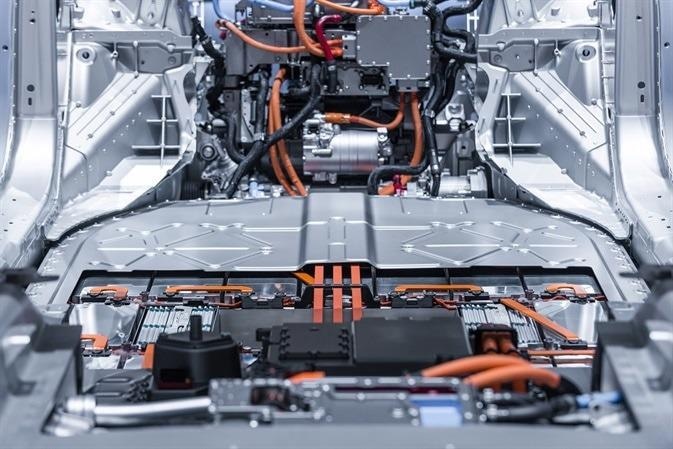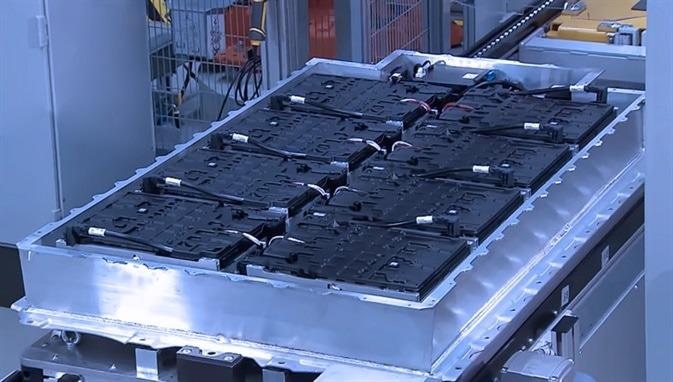In this interview, Simon Taylor, Marketing Manager at Mettler-Toledo GmbH, talks about how battery research, production, and QC can be improved by titration.
Battery technology has grown rapidly even in the past two decades, please give an overview of how you see the battery industry has developed and the importance of this progress to modern society.
Whilst researching this interview, I learned a surprising fact, namely that an American – Thomas Davenport – is credited with building the first Electric Vehicle (EV) in 1835! By 1900, EVs in Europe and the United States were commonplace, with commercial and consumer EVs representing one-third of all vehicles on the roads (albeit very slow ones). Henry Ford brought about the demise of the EV with the introduction of the mass-produced, gas-powered Ford Model T.
In 2020, the situation could not be further from those pioneering days. EV sales represent just a few percent of all light vehicle sales, yet their high-profile popularity, modern clean image, and changing clean air regulations – especially in Europe – result in continued, and accelerating, high double-digit growth.
One key change in the market, I believe, was the decision in many major Chinese cities to ban all gas-powered “scooters” by 2016, in an effort to reduce air pollution. Gas-powered motorcycles are considered vehicles, requiring stricter regulations - including requiring a driver’s license - which limits availability to the public.
China’s electric scooter sales account for over 80% of the global market and have certainly driven rapid innovation in the Lithium-Ion Battery (LiB) market. Major companies like Panasonic Sanyo (JP), CATL (Contemporary Amperex Technology Co. Ltd. CN), LG Chem Ltd (KR), BYD (HK/CN), Samsung (KR), and SK Innovation (KR) have already executed, or are planning, global expansion from Asia-Pacific locations to meet global demand.
Industry pioneers like Elon Musk and Tesla (USA), and recent high profile new start-ups like Northvolt AB (Sweden) are raising the profile of Lithium-Ion technology, potentially bringing those few percentage points to as much as 50% by 2030.
Many countries now plan to ban gas-powered vehicle sales which “drives” the need for green vehicles, it is also my hope that leaps in green chemistry naturally follow for a cleaner, brighter future for many market segments and related industries.

Image Credit: Sergii Chernov/Shutterstock.com
Please give an overview of how titration is used in the battery industry, throughout research, production, and quality control.
Through talking to our customers, it is clear that titration is one of the most critical analyses needed to ensure product quality.
Karl Fischer titration is used to test the specific water content, starting at the slurry, going through to the anode, cathode, separator, and electrolyte materials. The control and determination of the specific water content are critical in ensuring stable, safe, and long-lasting batteries.
For more information, you can read our Whitepaper ( Testing Lithium Battery Components for H2O and HF (mt.com))
What does METTLER TOLEDO offer in titration to support the battery industry?
Our range of titrators includes both Karl Fischer Titrators, Potentiometric (acid/base), complexometric, redox, and thermometric titrators. For high throughput requirements, we have our InMotion Autosamplers, for both Karl Fischer Titration and other application areas.
Our InMotion Karl Fisher Oven Autosampler in combination with a C30S Coulometric titrator is an industry-leading solution for high throughput Karl Fisher determinations.
For those customers requiring software solutions, our LabX software allows simple control of all our titration equipment, plus the effortless integration of METTLER TOLEDO’s balance, pH, UV/Vis spectrophotometer, and density and refractive index systems, all on one platform. LabX is easily integrated into any production or laboratory system to ensure SOP adherence and fulfill data handling requirements.
How are METTLER TOLEDO products used in the research of new compounds for battery production?
Although many of the same titration analyses used in the production of LiBs are relevant in early-stage research, they are less routinely performed. I have highlighted below some solutions from other areas of METTLER TOLEDO that are more relevant for your R&D readers
Automated chemistry for R&D
Our Automated Reactors and In Situ Analysis products dramatically improve chemical process development cycles, specific examples for the battery industry are:
- Tracking carbon crystallization and crystallization and precipitation with particle size and shape analysis with ParticleTrack and EasyViewer
- Improve your Silicon Oxide syntheses, and monitor reaction processes of electrolyte solutions with in situ reaction analysis, ReactIR, and reaction synthesis workstation EasyMax.
- Measure reaction calorimetry for screening, process development, and process safety with the RC1mx
Material characterization
Innovative analytical solutions for thermal analysis such as differential scanning calorimetry, thermogravimetry, and thermomechanical analysis, can be used to test individual battery components' thermal stabilities, exothermic reactions and enthalpies. Typical applications include:
- Thermal stability studies of electrode (anode and cathode) materials
- Penetration resistance, shrinkage, and a meltdown of separator materials
- Composition and content determination of carbonates in electrolytic solutions
Additionally, the complete investigation of materials is managed and controlled by STARe thermal analysis software – from sample management and measurement to interpretation and validation of results. Within the software all measurement methods, measurement data and calibration data, and evaluations of results are stored in a secure database with date and time stamp. Therefore, they are traceable at all times. It is impossible to delete or change data by accident.
More information on Thermal Analysis can be found here: www.mt.com/ta-batteries
Micro-weighing and micro-formulation
Many early-stage battery formulations in R&D are weighed by hand, typically in glove boxes, or in weighing cabinets under reduced pressure or inert gas atmospheres. Such conditions serve to preserve the integrity of the battery materials during experimental research formulations.
METTLER TOLEDO offers microbalances that accurately weigh samples to less than 1mg, and perform under Nitrogen and Argon atmospheres, and in reduced pressure conditions.
With a wide range of accessories from repositionable terminals, to external- and foot-switches with full software control, weighing difficult samples in glove boxes is easier than ever.
Why is it important for batteries such as Li-Ion batteries to have low levels of water present after production? How can Karl Fischer titration be used to help monitor water levels in batteries?
Water is essentially poison to LiBs. Lithium hexafluorophosphate (LiPF6) is a state-of-the-art electrolyte salt used in electrolytes but has its drawbacks: namely, that it is not stable against hydrolysis. Traces of water in the electrolyte lead to the formation of hydrofluoric acid (HF), which will degrade the electrodes and reduce the capacity of the battery.
The challenge is to both control the amount of water in production and to create accurate and repeatable analytical methods that can measure water amounts as low as 50ppm in anhydrous conditions.
What other compounds are quality checked with titration during the battery quality control process?
Metal content analysis is an important indicator of lithium battery performance, whether lithium iron phosphate, lithium cobaltate, or ternary nickel-cobalt-manganese hydride, the metal content is a must-check item.
Since electrochemical properties change with the ratio of nickel, cobalt, and manganese in the ternary materials, the ratio of the metal content to lithium - or between the ternary metals - greatly influences production.
Although ICP-MS is primarily used for single metal content determinations, titration is the method of choice to analyze the constant metal content. The characteristics of the ternary metal, the single content, and the proportion of the ternary metal can be obtained by complexometric titration and redox titration methods. Similarly, the total iron content of lithium iron phosphate can be titrated in the sample by means of redox titration.
There are several more applications, namely the determination of Hydrofluoric Acid (HF), mentioned earlier, Iodine absorption, and the determination of the Alkali content.
Many production requirements include a control specification for lithium hydroxide and lithium carbonate in the battery material. After the sample is extracted with water, lithium carbonate and lithium hydroxide are dissolved in water, filtered, and the two bases are titrated by acid-base titration.
Additional parameters optionally include the determination of chloride content via pH or UV/Vis spectrophotometry, measuring pH and conductivity of solutions, and direct density measurements of the electrolyte.
Please give an example of how METTLER TOLEDO has helped battery manufacturers in their production process.
A specific example is quite hard to find since we have such a multifaceted portfolio of instrumentation covering not only Laboratory applications but also Industrial applications, like weighing, filling and packing, and In-Process Control.
Our instrumentation portfolio includes
- Characterization of materials during R&D: Thermomechanical analysis, Thermogravimetric analysis, and Differential Scanning Calorimetry.
- Halogen Moisture analyzers, for rapid Loss of Drying analysis of the slurry
- Karl Fischer Titrators for specific Water determination in anode, cathode, separator, and electrolytes materials.
- Titrators for the analysis of metals, Hydrofluoric acid, and metal carbonates
- Precision and analytical balances for accurate and repeatable weighing
- pH meters, sensors, and solutions for your laboratory.
- Density meters to calculate solute content-density curves for electrolyte analysis
- Weighing automation for filling stations, and check weighing to ensure 100% product control.
- Sensors for In-Process Control of the chemical reaction, precursor manufacturing, and monitoring the polymerization of LiOH.
- Bench scales, floor scales, and vehicle weighing platforms for your downstream processes.
This broad portfolio places METTLER TOLEDO in a unique situation where we can optimize many processes for our customers, streamline data flow, and, through our global service offering, ensure maximum uptime.

Image Credit: Fishman64/Shutterstock.com
What does the future hold for METTLER TOLEDO’s titration product range?
Every day we have hundreds of specialists talking to customers about an extremely broad variety of applications; our application library is always updated with new application notes, and the same is true for battery analysis. In the last 3 months, we have published two guides and many new application notes for all techniques mentioned in this interview.
The technique of titration outdates all of us, but the applications and workflow possibilities – such as automation, data solutions, and improved user safety – are changing rapidly in today’s modern laboratories.
Where can readers find more information?
A great starting place would be our new page dedicated to battery analysis: Lithium Ion Battery Production I METTLER TOLEDO (mt.com)
About Simon Taylor
 Simon joined Mettler-Toledo UK Ltd. in 2011 as a sales specialist in the UK, and in 2012 moved to Switzerland to take the role of Global Analytical Balance Product Manager. In 2017, Simon moved to METTLER TOLEDO ANALYTICAL to lead the Titration product marketing and management team.
Simon joined Mettler-Toledo UK Ltd. in 2011 as a sales specialist in the UK, and in 2012 moved to Switzerland to take the role of Global Analytical Balance Product Manager. In 2017, Simon moved to METTLER TOLEDO ANALYTICAL to lead the Titration product marketing and management team.
Simon has over 20 years of experience in analytical chemistry, from the beginning as a QC Chemist at Pfizer, Sandwich, to scientific instrument sales, and now develops leading analytical instrument solutions at METTLER TOLEDO.
Disclaimer: The views expressed here are those of the interviewee and do not necessarily represent the views of AZoM.com Limited (T/A) AZoNetwork, the owner and operator of this website. This disclaimer forms part of the Terms and Conditions of use of this website.